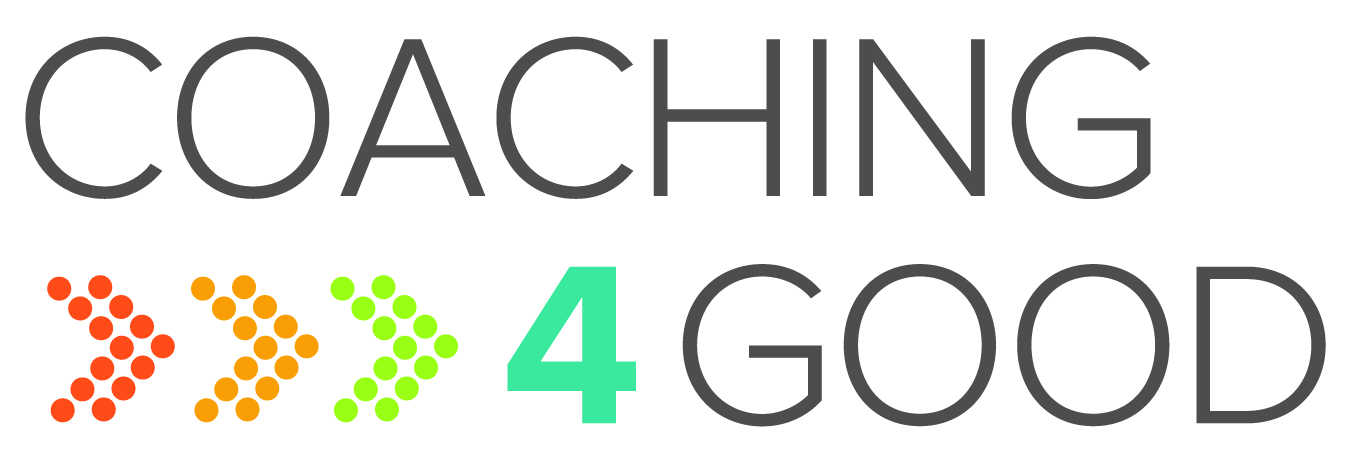
Your first stop? Your LinkedIn profile. Founded in 2002, LinkedIn is known as the “professional social network.” If Facebook is where you go online to communicate with friends and family, and Twitter is the ideal social network for connecting with people who share your interests and views, then LinkedIn is the best place on the web to network with work colleagues and employers.
Use LinkedIn Profiles to boost your career
Many college students create LinkedIn accounts for themselves midway through their undergraduate studies. As you start looking for internships or post-college jobs, it’s a good idea to have a professional face for your personal brand online. LinkedIn profiles are welcoming in this regard because it is familiar. The interface and profile-building features aren’t far removed from Facebook and other social networks that you are already using.
Ideally, LinkedIn will help you land a job. Recruiters use the network on a frequent basis to find and contact possible candidates for job openings. You can use LinkedIn to connect with prospective employers or high-level influencers in your desired field — people who might be able to help you get your foot in the door. If you believe in the mantra, “it’s not what you know, but who you know that matters,” then you understand why LinkedIn and its limitless networking opportunities are essential tools for career building.
11 Steps to Build the Perfect LinkedIn Profile
Before you can start connecting with professionals in your field, and before recruiters can start getting in touch with you out of the blue, you need to have a complete and professional LinkedIn profile. Once you have registered with LinkedIn and created an account, follow the 11 steps below to build the kind of LinkedIn profile that is going to garner attention.
-
Pick the right photo
The first step to a professional LinkedIn profile is picking our photo. Leaving your account without a photo will make it look like a spam account, while uploading a sloppy, out-of-focus photo of yourself will make you look unprofessional.
Most LinkedIn users use professional headshots as their profile pictures. As a younger person, you may not have headshots that you can use yet — or spare cash to spend on them. Senior pictures from your last year in high school often work well because they are professionally developed. If nothing else, get dressed up and have a friend snap a few photos of you against a clean background. With a decent phone camera and a flattering filter, you should be able to get an attractive, professional-looking picture without much fuss.
-
Craft your headline
Your professional LinkedIn profile headline is important because it will show up alongside your name when people search for you on the site. People who are already employed will often list their job title and the name of the company they work for as their headline. As a student, you might go for a more general approach, highlighting your key skills or the jobs and industries in which you will be seeking employment. If you need some inspiration, LinkedIn provides a helpful “See what other users in your industry are using” link when you go to edit your headline.
-
Fill out your personal information accurately and honestly
The rest of the details at the top of your profile (name, education, location, industry, current work) are fairly straightforward. Despite the simplicity, you need to be sure to be accurate here. Use your full name, don’t add universities you didn’t attend to the education section, and don’t list internships you’ve finished as “current work.” Just like with your resume, being truthful with your LinkedIn profile could mean the difference between landing a job and losing an employer’s trust.
-
Add a background photo
Just like Twitter and Facebook, LinkedIn lets you add a background photo to your profile. While not expressly relevant to your professional goals, a background photo might just be a stock photo related in some way to your industry. This photo can still do you some favors. LinkedIn is not the snazziest social network on the web with its fairly conservative interface and aesthetic. You can make your profile more attractive with the right background photo. According to Entrepreneur, having a background photo will even increase the likelihood of your profile getting viewed.
-
Add your contact info
When employers and connections view your LinkedIn profile, you want to give them every opportunity to reach out and start a conversation with you. Sure, any LinkedIn member can send a message to your inbox. However, editing the contact information part of your profile to include other ways to reach you (your email address is a must) or other places to find you online (include your Twitter handle and a link to your website or blog) can certainly make life easier for recruiters. It’s up to you whether or not you think it would be a privacy risk to include your phone number.
-
Tweak your profile URL
By default, LinkedIn will generate a profile URL based on your name. Generally, these URLs will include a bunch of unnecessary numbers and slashes. However, you can customize your URL so that it is just your name instead of your name with a bunch of numbers. A simplified URL (something like linkedin.com/go/john-doe) is cleaner than the original and will make it easier for people to find your profile. Plus, you’ll be able to remember and share the URL on the fly instead of always having to send a link to someone later on.
-
Create a detailed online resume in the “Experience” section
The main body of every LinkedIn profile is the Experience section. It’s here that you will translate your resume into something that recruiters, employers, and other LinkedIn users can peruse. This part of the LinkedIn profile is the largest, most complex, and arguably most important, so make sure you are playing by the rules below.
- List your jobs in reverse order: Just as with a resume, people viewing your LinkedIn are going to expect to see your most recent and/or most relevant work experience close to the top of your profile. From there, go back in reverse chronological order to detail your professional history.
- Follow the format: Instead of just giving you a big text field into which you can paste your resume, LinkedIn lets you enter each piece of professional experience as a separate position. Add a separate position for each job you’ve worked (or at least for each company that you’ve worked for) and then fill out all of the details that LinkedIn requests. Each position needs a company name, a job title, a time period, and a description.
- Be truthful: Just like with your resume, you want to be truthful when listing your work experience on LinkedIn. Even if your job titles aren’t “sexy” or “eye-catching,” be honest about them. Same goes for your employment dates and your description sections (where you can detail your responsibilities and accomplishments at each job). Recruiters are going to be looking at your profile, but so are former bosses, managers, and colleagues. A lot of people use LinkedIn to reconnect with past business associates, and it will raise eyebrows among your connections if the information you are presenting doesn’t correspond with the truth.
- Be concise: It can be tempting to write a whole lot about your professional experience on your LinkedIn profile. After all, you aren’t trying to fit your entire life into a one-page document like you’ve had to do with a resume in the past. With more space, you can use LinkedIn to provide some extra detail, depth, and insight into what you accomplished at each job, internship, or volunteer position. But your LinkedIn profile is meant to be a summary, not a novel. Keep each description section short, highlighting the key bullet points of each position that recruiters, employers, or connections are most likely to find interesting or valuable. Especially while you are a younger professional, it’s better to keep things appealingly succinct.
- Use metrics: Where possible, include metrics to help quantify your successes at your past internships and jobs. For example, sales professionals will often include their peak or average sales figures as part of each job listing. Try to find a similar achievement at your job that you can quantify. Recruiters and employers love numbers because they help provide some extra insight into why you might be valuable as a potential hire.
- Add media: While keeping the description sections concise is a good idea, that doesn’t mean you can’t get creative with each work history listing. Do you have work samples that you can share? Attach a document, photo, link, video, or presentation that helps express your accomplishments at each job.
-
Add skills and start endorsing friends
Looking for a way to get social with your friends on LinkedIn? The “Skills & Endorsements” section of your profile provides the best opportunity to do so. This section is valuable because it lets you shine a light on skills you have that you might not have had the chance to highlight in your work experience listings. Whether it’s content writing, sales, coding, knowledge of a specific piece of software, social media marketing, or anything else, list the skills and abilities that you think define your professional persona. By filling out your skills, you give people viewing your profile a quick and easy way to see what you think you might bring to the table as part of an organization.
Of course, the really fantastic thing about LinkedIn’s “Skills & Endorsements” section is that it’s only half about what you think. The other half is about what your connections believe is true. Your LinkedIn connections — including friends, co-workers, professors, advisors, mentors, bosses, managers, and others — can look through your skills list and endorse the ones they can personally validate. In essence, your connections can become your references, speaking on your behalf to say, “Yes, he/she does have this skill.”
There are a few ways to start getting endorsements. The first is to ask a few of your connections — preferably people you have worked with in a positive professional capacity — to look through your skills list and choose a few endorsements. The second is to go through your list of connections and start giving your own endorsements. Most LinkedIn users will return the favor and take a minute or two to endorse some of your skills. The more endorsements you have, the more impressive this section will look.
You can also ask connections to write recommendations on your behalf, which will appear on your profile after you approve them. These recommendations play out as more traditional endorsements, with a note from each reference providing some kind words about your skills, work ethic, experience, and other facets of your professional life and skills.
-
Add your education information
You likely put in some information about your education at the top of your profile, if only just the college you attend. Near the bottom of your profile, you will find a full-fledged education section. You can use this section to enter information about the school or schools where you have studied. Inputting details about recognizable institutions will cause the logos of your schools to appear on your profile, which can add some nice visual zest to the otherwise fairly plain look of the LinkedIn profiles interface.
In addition to listing institutions, you should put in details about the degrees you’ve received, the years you attended each school, and the activities or societies you were a part of. You can also write a brief description of each educational opportunity to explain your course of study, provide some extra details about your degrees, and describe awards or scholarships you received. For young or entry-level professionals, the education section is extra important, so make sure to spend some time making sure it looks impressive and sheds some light on you as a person and as a professional.
-
Consider adding other sections to your profile
The Education section is the last “standard” section to appear on your LinkedIn profile. However, you might choose to add an extra section or two to your profile, depending on whether those categories are relevant to you. For instance, you can add pages to highlight any languages you speak beyond English, your volunteering experience, your test scores, works you’ve had published, awards or honors you’ve received, and more. To browse available sections, scroll up to the top of your profile editing page. You will find additional sections right underneath your profile header (the top section with your photo, headline, and location).
-
Get active
Once you’ve “completed” your LinkedIn profile, you won’t be getting the most out of LinkedIn until you really start being active on the network. Start by linking up with new connections regularly. Friends, family members, and classmates are good groups to start with, as are people you might have worked with at past jobs. Follow companies that you think you might want to work with someday. Join groups that are relevant to you, from your college’s alumni association to groups centered around your chosen profession. The more you use LinkedIn, the more visible you will become, which will help you catch the eye of a recruiter or employer while you improve your search results and overall online brand.
Have other tips? We’d love to hear about them in the comments below!
Author Bio:
Michael Klazema has been developing products for criminal background check and improving online customer experiences in the background screening industry since 2009. He is the lead author and editor for Backgroundchecks.com. He lives in Dallas, TX with his family and enjoys the rich culinary histories of various old and new world countries.
Amy Wolfgang
Amy Wolfgang is a career coach who founded Wolfgang Career Coaching and co-founded Coaching 4 Good. She brings over 15 years of corporate and coaching experience to help organizations boost employee engagement while simultaneously helping her clients excel in their careers. She is a certified PCM (Professional Career Manager) and has a Master’s degree in Educational Psychology from The University of Texas at Austin.








Stay In Touch